What is reverse shoulder replacement surgery?
Reverse shoulder replacement is a specialist operation used to treat severe shoulder arthritis or complex shoulder conditions, particularly when the rotator cuff muscles are damaged or non-functional. In this procedure, the normal ball-and-socket structure of the shoulder is reversed — a metal ball is attached to the shoulder blade, and a socket is placed on the top of the upper arm.
This reversed design allows the deltoid muscle to lift the arm instead of the damaged rotator cuff, improving shoulder movement and reducing pain.
When is surgery recommended?
You may be offered a reverse shoulder replacement if:
- You have advanced shoulder arthritis and a torn or irreparable rotator cuff (a condition called cuff tear arthropathy)
- You have severe shoulder pain, weakness, or stiffness
- You’ve had a failed shoulder replacement or previous unsuccessful surgery
- You have a complex shoulder fracture that cannot be fixed with pins or plates
- Non-surgical treatments have failed to control your symptoms
It is especially useful in older adults where joint function has been significantly limited and standard replacement is unlikely to work.
What does the surgery involve?
The operation is done under general anaesthetic and takes around 1.5 to 2 hours. During the procedure:
- The damaged joint surfaces are removed
- A metal ball is attached to the shoulder blade (glenoid)
- A plastic socket is fitted to the top of the upper arm bone (humerus)
- The joint is carefully aligned and stabilised
You will usually stay in hospital for 1 to 2 nights after the procedure.
Recovery and rehabilitation
After surgery, your arm will be supported in a sling for several weeks to allow healing. Physiotherapy will begin early to help you regain mobility and strength.
Typical recovery includes:
- Basic daily activities within 4 to 6 weeks
- Return to light tasks by 2 to 3 months
- Full recovery within 6 months
You’ll be advised to avoid lifting heavy items or overhead work during the early stages of recovery.
Risks and complications
Reverse shoulder replacement is generally safe and reliable, but like all operations, it carries some risks:
- Infection
- Dislocation of the implant
- Nerve injury
- Fracture during or after surgery
- Loosening or wear of the implant over time
- Limited range of movement
Your surgeon will talk you through these risks and how they apply to your individual case.
Will I regain full shoulder movement?
You may not regain full movement, but most people experience a significant improvement in pain, strength, and function. Everyday activities like dressing, grooming, and reaching waist to shoulder height typically become easier and more comfortable.
Why choose Midlands Orthopaedic Clinic?
At Midlands Orthopaedic Clinic, our shoulder specialists are highly experienced in performing complex procedures such as reverse shoulder replacement. We use the latest implant systems and surgical techniques to ensure the best outcomes for each patient.
You’ll receive expert guidance, from initial assessment through to post-operative physiotherapy and long-term follow-up — all in a supportive, patient-focused environment.
Get in touch
If you’re suffering from severe shoulder pain or have been told you need a shoulder replacement, we’re here to help you explore your options.
Contact Midlands Orthopaedic Clinic today to arrange a consultation with one of our expert shoulder surgeons. Call us directly, use our online enquiry form.




